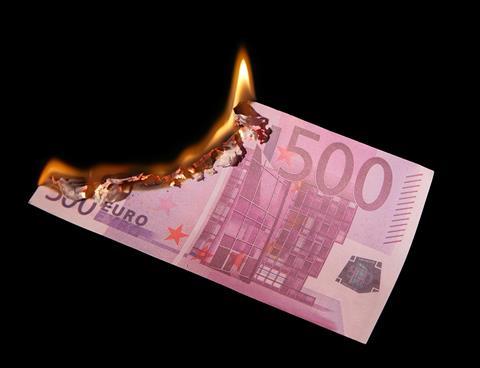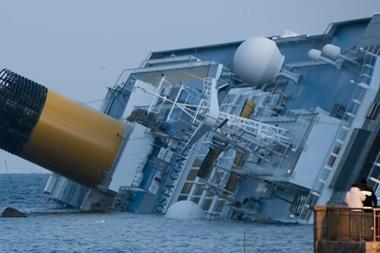Some are warning that the world’s economic woes and the protest movements they have fuelled could spell the end of the capitalist system as we know it. Could we already be in transition?

Click on the pdf link, right, to view our infographic ‘The Risk Universe 2012’.
A dangerous mix of demographic and societal problems is pulling us toward a dystopian future, warned the World Economic Forum (WEF) recently.
“For the first time in generations, many people no longer believe that their children will grow up to enjoy a higher standard of living than theirs,” said Lee Howard, the WEF’s managing director. “This new malaise is particularly acute in the industrialised countries that historically have been a source of great confidence and bold ideas.”
It’s not a pretty picture being drawn by one of the world’s leading authorities on social and economic development. And it’s this sense of hopelessness that is contributing to a worldwide movement that is fundamentally, sometimes violently, opposed to the status quo.
The Occupy Wall Street movement, a loosely organised grass-roots movement in favour of reforming or, in some cases, overthrowing the capitalist system, is gaining strength around the world, from New York to London, Paris and Rome.
One symbol that has come to epitomise this fractious faction is the Guy Fawkes mask - popularised by the Hollywood blockbuster V for Vendetta, in which a charismatic ‘freedom fighter’ unites the people against a totalitarian regime.
The total collapse of capitalism remains extremely remote, but nonetheless it is a risk some are taking seriously (click to jump to box ‘What would a new system look like?’).
More and more people are asking whether there is a solution that will allow the world to move beyond a pure form of capitalism towards something more sustainable and less divisive.
We have already seen serious rioting in Greece, and with heavy austerity measures coming into play in Spain and Italy, the question is whether the same kind of social unrest will spread”
Gilbert Canameras, Amrae and Eramet
Ferma board member and GDF Suez deputy chief risk officer Michel Dennery says: “I believe that we are dealing with the consequences of an outdated economic and social model - one that lasted throughout the second half of the 20th century. We are now in a period of transition, but as yet there is no new economic and social model in place to deal with these issues.”
Amrae chief executive and Yves Rocher head of risk management, insurance, internal audit and regulatory matters Gerard Lancner adds: “Many societies have a serious disparity between the rich and the poor. Many people do not have access to either work or natural and cultural resources. This causes tension and has the potential to create social unrest. Certain demographics [for example, a large population of unemployed young men] were a major factor in the recent Arab Spring.”
“The slowdown in the world economy could bring about serious social unrest,” Amrae president and mining group Eramet’s director of risks and insurance, Gilbert Canameras, says. “This kind of risk isn’t limited to emerging countries; we have already seen serious rioting in Greece, and with heavy austerity measures coming into play in Spain and Italy, the question is whether the same kind of social unrest will spread. It’s the risk manager’s job to predict how these factors will manifest themselves, and plan action to allow their companies to effectively deal with the situation.”
And what does this all mean for the big businesses that are at the heart of this doomed system? Almost certainly they will have to bear the brunt of a serious backlash. At the extreme end, this means more violence from activist groups and disenfranchised individuals who associate big business with the moral failures that led to the global crisis. At the very least, the private sector can expect to become much more heavily regulated.
Sam Rosenfeld, chairman of the Densus Group and an expert on protester management, sees an increased threat of violent or “direct action” against a wide range of businesses.
It’s already a big problem, he says, but adds: “Protests are receiving much more attention because the media is more tuned into them, particularly as a result of the Occupy movement.”
Changing strategies
There’s nothing new in protesters taking action against companies that they perceive to be acting inappropriately. “Greenpeace has always been an effective direct action protest group. US Uncut and UK Uncut were founded to protest against corporations that don’t pay their fair share of taxes,” Rosenfeld says. But since the authorities have begun dismantling sit-in demonstrations, such as the “tent city” outside St Paul’s in London, the protesters’ tactics have begun to change. Elements of the Occupy movement are abandoning the “camp strategy”, says Rosenfeld, in favour of more direct action targeted at specific businesses.
There’s a phenomenon of “protester profit”. Protesters deliberately create the conditions where a policeman does something that infringes their civil rights and then sue them”
Sam Rosenfeld, Densus Group
On December 7 last year, staff in the post room at the Deutsche Bank headquarters in Frankfurt found a letter bomb addressed to the bank’s chief executive Josef Ackermann. Inside the letter bomb was a note from the Italian anarchist group Informal Anarchist Federation, saying that there would be three explosions against “bankers, banks, fleas and bloodsuckers”.
As well as the operational and reputational risks, companies on the receiving end of protester action have to be wary of litigation, he says. If, for example, a security guards overstep the legal entitlement for how to deal with a protester during an occupation, the company could end up getting sued.
“There’s a recognised phenomenon of ‘protester profit’. It means protesters deliberately create conditions where a policeman or a security guard infringes their civil rights and then they sue them for it. So when you start to talk about the more extreme or violent action measures - those certainly can’t be ruled out.”
Five percent of people involved in a street protest are looking to engage in violence, says Rosenfeld. Another 15% will engage in violence if they see that they can get away with it. And the other 80% will have no intention of being involved in violence unless something so outrageous happens to them that they have no choice.
“That is why anarchist groups at significant national security conventions in the USA try to get the police to overact against the whole crowd because then their job is done.”
Going after softer targets
Rosenfeld expects to see more direct action in the future as larger numbers of people become increasingly aggrieved and disenfranchised. He also anticipates more secondary targeting and smear campaigns against company directors or bosses. Secondary targeting involves taking action against associated third parties, which are normally softer targets, with an economic link to the primary target.
“This threat will widen out as the number of companies likely to be targeted increases, because the drivers of what will anger people are broadening, plus primary targets will become more protected and inured to the threat.
“For instance, when Greenpeace wanted to draw attention to the purchasing of the Indonesian forest by cardboard companies, they didn’t go after the cardboard companies and they didn’t go after the forestry companies, they went after Matell. Greenpeace turned up at Matell headquarters with dancing girls and someone dressed as Barbie in a digger and it was designed to spark a social media campaign directed primarily at children.
“They wanted kids saying to their parents: ‘Well, I don’t want a Barbie, because Barbie’s cutting down the forests.’ Direct action doesn’t have to be focused at economically related operations, quite often direct action is focused at reputation and brand value.”
What does this mean for risk managers? “They need to be looking not only at their own risks, but at their counterparties and their suppliers and clients,” Rosenfeld says.
As for appropriate defensive measures, the most important thing is “situational awareness” and knowing what the threats are, he says. “Ask: ‘Do I have protester exposure and if so what is it?’ That includes a review of your own company’s activities as well as your clients’ and suppliers’ procedures. Once you have that picture, it’s then a case of what are the physical measures you need to take and the other considerations involved in protester management.”
It’s important to educate your staff about the unique tactics that protesters use, says Rosenfeld. “There was a notable incident in a protest 18 months ago where a protester climbing a ladder to try to stop operations said to an employee who was blocking the way: ‘This is a peaceful protest, you can’t stop me.’ And the member of staff got out of his way. Not the right thing to do. But if you have not educated your staff in the correct actions to take in dealing with these situations, you leave the company open to both operational and reputational damage.”
However the global economic system evolves, it is clear that the next 10 years or more are likely to be characterised by increasing uncertainty and possibly seismic shifts as the world realigns to a new growth and development trajectory. If the civil unrest witnessed in recent years is anything to go by, it could be a bumpy ride.
What would a new system look like?
In a paper published at the end of last year, consultancy Towers Watson described the collapse of capitalism as an “extreme risk”. But it is obviously a threat that it deems worthy of consideration.
According to Towers Watson, the most likely scenario is for the system to evolve from one end of a spectrum where the market is king (minimum regulation) towards the other end, where we could see more onerous regulations and government intervention in, and control of, the economy. But they stress that there is an extreme risk of the demise of the capitalist system and the end of the market as the primary means of resource allocation.
While the overriding political consensus is nowhere near aligned with the views of the anti-capitalists, there is significant mistrust of financial institutions in particular and greedy big business in general.
Capitalism’s basic premise is that the pursuit of self-interest and the right to own private property are morally defensible and legally legitimate. In a pure capitalist economy, the market drives the allocation of resources and any economic decisions.
But recently both the UK prime minister, David Cameron, and leader of the opposition Labour party Ed Miliband have spoken about ways to enforce morality onto the free market system as a means of reigning in its excesses. It remains to be seen if this will materialise into anything beyond political spin. Both parties have close links with the City of London and Cameron is the son of a stockbroker.
Aegis Advisory analyst Mal Bozic is confident Western institutions will find a solution. “The genius of North Atlantic capitalism is its ability to renew and reform itself before it is thrown off in a Russian or Soviet style,” he says.
“Capitalism’s response to communism was to institute workers’ rights and the weekend. You respond by removing some of the excesses of the system. Right now, in the UK, we have a centre-right government agreeing with some of what the anti-capitalist movement is saying, for example. Our political systems are responsive and able to respond before the masses get the pitchforks out.”




















No comments yet